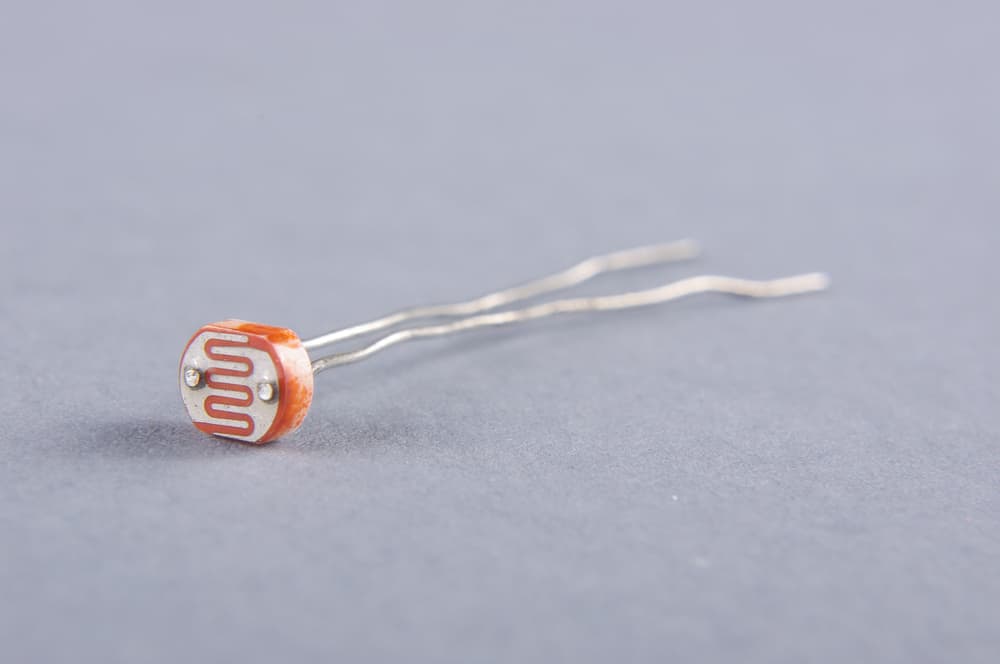
Photoresistors, less commonly known as light-dependent resistors, are devices that experience a change in their DC resistance when exposed to the light of certain wavelengths. These components are widely used in some microcontroller platforms, and they give designers a simple way to create a proof-of-concept for a system that requires some light sensing element. If you want to use one of these components in a new design, make sure you understand a few important specifications in a photoresistor datasheet.
Reading a Photoresistor Datasheet
The first point to note in a photoresistor datasheet is the relative lack of concrete information for most products. This is because photoresistors are not designed to be used in production-grade optical systems or for sensitive measurements. Instead, these devices are optically sensitive semiconductors with a resistive load line and should only be used in a DC application. For this reason, many of the specifications you’ll find in production-grade opto-electronic components are absent from a photoresistor datasheet.
Even though some photoresistor datasheets may be lacking some information, and these components are not always the best choice for most optical applications, these devices are still useful in simple resistive circuits. Photoresistors will experience a decrease in their DC resistance when exposed to light, generally at wavelengths spanning from the infrared to the visible range.
With that being said, photoresistors have their use as simple resistive elements that can sense light’s presence or absence. They are also straightforward to use in a circuit: they are 2-terminal devices placed just like any other resistor. Here are some essential specifications found in a photoresistor datasheet:
- Light and dark resistance: Photoresistors have high resistance in darkness and low resistance when illuminated. These values could be different by a factor of approximately 10.
- Peak spectral response: This is one area where photoresistor datasheets are deficient in providing information. The peak spectral response will usually just be specified at a specific wavelength and light intensity.
- Response time: When light is switched on or off, the device will take some time to transition between its high and low resistance states. This is a capacitive response that any external series resistance will slow down.
Because two resistive states are normally specified, and due to the lack of responsivity data, these devices are not useful for precision measurements. More advanced opto-electronic systems require an alternative light-sensitive component that provides more consistent response and finer resolution than a typical photoresistor.
Alternatives to Photoresistors
While photoresistors are fine for proof-of-concept projects or hobby projects, production-grade systems do not use photoresistors. Instead, they will use two possible types of components, depending on the type of sensing readout and electrical behavior required in the sensor circuit. These two alternative types of components are photodiodes and phototransistors.
Photodiode
At the most basic level, photodiodes are passive components constructed with the same structure as a solar cell, where a pn diode provides rectification and encourages current flow along one direction. These components are made from silicon, GaAs, InGaAs, or other III-V/II-VI semiconductors, which will determine the wavelength ranges where these components are sensitive. These devices do not operate like a resistor, although they will have a resistive transfer curve when operated at the appropriate reverse bias voltage (see photodiode mode defined below).
Photodiodes come packaged as discrete components or as an array, such as the linear array with bonding wires shown above.
The difference is that these components can be designed to operate in two regions with some applied bias: in a standard photodiode mode or in photoconductive mode. The photoconductive mode is the same mode used in solar cells, but this is not so useful for taking optical measurements as the component’s transfer curve will be nonlinear. When operated in photodiode mode, the component is placed in reverse bias with an applied external voltage. The incident light changes the reverse bias current extracted from the device. In this mode, the device can be susceptible to changes in input light to be used as very accurate light sensors in optical measurement systems.
Phototransistor
A phototransistor is more similar to a photoresistor in that it provides switching action between two states. In a phototransistor, the load line for the entire circuit will determine the optical response and the incident light intensity that will cause the output current to saturate. These devices are normally structured as bipolar transistors, and the incident light will modulate the voltage across the collector in the device structure. Most devices that are marketed as “photoelectric sensors” will use a phototransistor.
Phototransisitor for collecting visible light.
Whether you need to find a photoresistor datasheet, or you need to source an alternative part like a photodiode, you can find the parts you need with the search features in Ultra Librarian. The Ultra Librarian platform gives you access to PCB footprints, technical data, and ECAD/MCAD models alongside sourcing information to help you stay ahead of supply chain volatility. All ECAD data you’ll find on Ultra Librarian is compatible with popular ECAD applications and is verified by component manufacturers to help streamline your designing process.
Working with Ultra Librarian sets up your team for success to ensure streamlined and error-free design, production, and sourcing. Register today for free.